Rob Bignell's Blog, page 264
April 14, 2016
Once you publish book, start bookkeeping
As an author,  when you think of bookkeeping, the first thought that probably comes to your mind is how you organize all of your books on the limited number of shelves you have in your house. As a published author, you���ll want to think about bookkeeping a little differently, though.
when you think of bookkeeping, the first thought that probably comes to your mind is how you organize all of your books on the limited number of shelves you have in your house. As a published author, you���ll want to think about bookkeeping a little differently, though.
Bookeeping involves maintaining the financial records of a business. Since you���re a business now, you���ll need to keep track of income derived from your book sales.
Such bookkeeping is fairly easy. You���ll have to keep track of all revenues ��� any money you make from book sales (online or at a events), speaking fees, etc. ��� and of all expenses ��� any money you must spend related to your business, a computer, printer, ink, paper, pens, gas for traveling to a writers conference where you sell your books, etc. Ideally, your revenues will outpace your limited expenses.
Using accounting software to keep track of your revenues and expenses is a good idea and other than the short learning curve for the program, actually will make bookeeping easy. Most office supply stores have inexpensive software such as Quick Books that can be used (You also can subscribe to it online.).
To ensure your bookeeping remains easy, immediately enter any revenues and expenses into your accounts ledger (kept on your software program). Don���t leave it to memory or let receipts pile up so that you wonder what the expense was for. Speaking of receipts, always keep them, even after you���ve entered them in your ledger. Lastly, never make business-related expenses from your personal account.
As you bring in revenues, be sure to set aside a portion of them for paying taxes. If a sole proprietor, you will need to pay self-employment tax, which is your contribution to Social Security and Medicare. Exacltyhow much you will need to set aside depends on your revenues, but plan on paying about 10-20 percent of your revenue to Uncle Sam and your state.
Professional Book Editor: Having your novel, short story or nonfiction manuscript proofread or edited before submitting it can prove invaluable. In an economic climate where you face heavy competition, your writing needs a second eye to give you the edge. I can provide that second eye.
<A HREF="http://ws-na.amazon-adsystem.com/widg... Widgets</A>
Related articles
 How to determine your ebook's price
How to determine your ebook's price Three ebook formatting tips, part VII
Three ebook formatting tips, part VII Q&A with Inventing Reality Editor Rob Bignell
Q&A with Inventing Reality Editor Rob Bignell Use stock art to create cover inexpensively
Use stock art to create cover inexpensively Self-published authors may need EIN
Self-published authors may need EIN
April 13, 2016
To use or not to use the Oxford comma���
A number 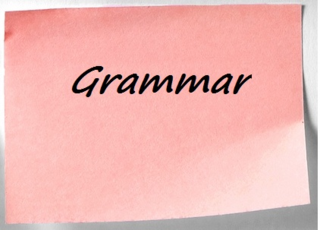 of grammarians and language teachers often think that punctuation, capitalization, spelling and grammar rules are absolute. The reality is that grammar hardly is black and white. It evolves over time, and depending on your current location in the world ��� the United States or the British Commonwealth, Canada or England ��� different rules generally are considered the norm of what constitutes proper written English. Indeed, even within a country, various editors and teachers will espouse different rules.
of grammarians and language teachers often think that punctuation, capitalization, spelling and grammar rules are absolute. The reality is that grammar hardly is black and white. It evolves over time, and depending on your current location in the world ��� the United States or the British Commonwealth, Canada or England ��� different rules generally are considered the norm of what constitutes proper written English. Indeed, even within a country, various editors and teachers will espouse different rules.
One such rule is that of the serial comma (aka the series comma, Oxford comma, or Harvard comma). For example, The MLA Style Manual, The Chicago Manual of Style, Strunk and White's Elements of Style, and the U.S. Government Printing Office Style Manual all give one rule (use the comma) while the Associated Press Style Manual gives a contradictory rule (don���t use it)...and the AP rules generally matches what most British style guides say, though even in Merry Old England not all style guides are in agreement.
The serial comma rule issue centers on whether a comma is needed in a list. Consider the sentence Three popular colors are red, blue, and yellow. Supporters of the Oxford comma would say a comma is needed after the second to last word in the series and before the conjunction, in this case between blue and and. The primary reason given for using a comma there is that it makes identifying the individual items in the series easier for the reader.
Those who dispense with the Oxford comma would simply write Three popular colors are red, blue and yellow. They suggest that the individual items in the list are obvious (after all, and serves the same purpose as the comma), and that more punctuation usually means greater reader confusion.
As you can tell, the comma rule is sort of like getting a hardcore Democrat and a hardcore Republican in the room. They���re simply not going to agree.
Bottom line: Use the comma rule that your publisher prefers. Just always be consistent in its application.
Additional note: The Oxford comma generally refers to single words in a series and not to complex phrases in a series. If the items in the series consist of multiple words, almost everyone is agreement that a comma is needed after each item. For example: The Allies fought Nazi Germany under the Hitler dictatorship, fascist Italy under the control of Mussolini, and Imperial Japan as ruled by Tojo.
Professional Book Editor: Having your novel, short story or nonfiction manuscript proofread or edited before submitting it can prove invaluable. In an economic climate where you face heavy competition, your writing needs a second eye to give you the edge. I can provide that second eye.
<A HREF="http://ws-na.amazon-adsystem.com/widg... Widgets</A>
Related articles
 Word in transition: Co-worker vs. coworker
Word in transition: Co-worker vs. coworker What are 'The Big Six' book publishers?
What are 'The Big Six' book publishers?
April 12, 2016
Four writing prompts involving secrecy
Good stories 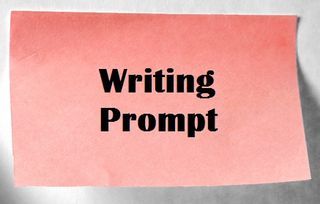 center on the clashing of characters��� goals and motivations. Sometimes a character���s goals and motivations arise upon the need to keep or to unveil a secret. Here are four writing prompts for stories that involve secrecy.
center on the clashing of characters��� goals and motivations. Sometimes a character���s goals and motivations arise upon the need to keep or to unveil a secret. Here are four writing prompts for stories that involve secrecy.
Man vs. nature
The main character is sent on a quest to find some object. Where the object is held, though, is a secret. To locate it, he must cross a number of dangerous environments that he is unfamiliar with. How does he survive these natural hazards and find the object?
Man vs. man
Our main character discovers a shocking secret about a loved one. What is the secret? How does he verify it? What is ambigious about some of the facts that would seem to verify it? How does knowing this secret change his perspective about his loved one and his own life?
Man vs. society
Our protagonist has a special ability that she must keep secret from society. What is this ability and why must she keep it hidden? How does she go about keeping it secret? What if one day, through an accidental slip, she reveals her secret and others (maybe the government) come after her so they can use her secret skills for their purposes?
Man vs. himself
The main character is uncomfortable with his family���s legacy and so attempts to run away from it. What is this legacy? How does he attempt to hide it? Can a man ever truly run away from something that is an internal problem he must come to terms with?
Professional Book Editor: Having your novel, short story or nonfiction manuscript proofread or edited before submitting it can prove invaluable. In an economic climate where you face heavy competition, your writing needs a second eye to give you the edge. I can provide that second eye.
&amp;lt;A HREF="http://ws-na.amazon-adsystem.com/widg... Widgets&amp;lt;/A&amp;gt;
Related articles
 Questions to ask yourself when plotting a story
Questions to ask yourself when plotting a story Zip two disparate stories into one tale
Zip two disparate stories into one tale Consider using counterplotting in your novel
Consider using counterplotting in your novel Plot story using dramatic throughlines
Plot story using dramatic throughlines How to create an interesting villain for your story
How to create an interesting villain for your story
April 11, 2016
Improve writing with ���What do I mean when I say���
When writing 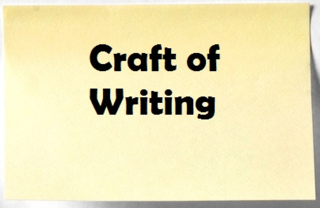 fiction, you almost always want to show rather than tell. By showing, you infer through a character���s actions or dialogue what one feels.
fiction, you almost always want to show rather than tell. By showing, you infer through a character���s actions or dialogue what one feels.
For example, Astonished, Laura said, ���That���s not true, Dawn, you are very beautiful.��� tells Laura���s feelings that she is astonished. You could instead show or infer it by writing Laura gasped. ���That���s not true, Dawn, you are very beautiful.��� The reader still knows that Laura is astonished, but by showing it, the text actually is more energetic and evocative.
Unfortunately, showing rather than telling doesn���t come natural for some, probably because in everyday speech we cut to the chase and tell. To write this way, you thus have to get into this frame of mind. You can do so by practicing this neat writing exercise: What do I mean when I say���
First, pick an emotion, such as happiness. Saying someone is happy in a story is telling.
Now think of a time when someone you know was happy, and in your mind observe their body. How do you know she is happy? Perhaps she is smiling. Or her eyes twinkle. Maybe her walk is carefree.
All of these physical gestures infer happiness. Write them down and save them for a story when you must show happiness in a character.
You can practice this exercise every day. Each morning, select a new emotion. Carry a pen and notepad with you through the day, and as you observe people expressing that feeling ��� at work, at the park during lunch, at the supermarket when you ran your errand, on television when an actor must portray that feeling ��� write down the physical gestures.
Soon you���ll have a colleciton of notes so that you never have to tell again.
Professional Book Editor: Having your novel, short story or nonfiction manuscript proofread or edited before submitting it can prove invaluable. In an economic climate where you face heavy competition, your writing needs a second eye to give you the edge. I can provide that second eye.
&amp;amp;amp;amp;amp;amp;amp;amp;amp;lt;A HREF="http://ws-na.amazon-adsystem.com/widg... Widgets&amp;amp;amp;amp;amp;amp;amp;amp;amp;lt;/A&amp;amp;amp;amp;amp;amp;amp;amp;amp;gt;
Related articles
 Writing inspiration: Model a story
Writing inspiration: Model a story Writing inspiration: Read your favorite author
Writing inspiration: Read your favorite author Consider using episodic fiction plot structure
Consider using episodic fiction plot structure Make tables readable in your self-published book
Make tables readable in your self-published book Give away valuable content to sell books
Give away valuable content to sell books
April 10, 2016
Five Great Quotations about the Writing Process
���There is  nothing harder to estimate than a writer's time, nothing harder to keep track of. There are moments���moments of sustained creation���when his time is fairly valuable; and there are hours and hours when a writer's time isn't worth the paper he is not writing anything on.��� - E.B. White
nothing harder to estimate than a writer's time, nothing harder to keep track of. There are moments���moments of sustained creation���when his time is fairly valuable; and there are hours and hours when a writer's time isn't worth the paper he is not writing anything on.��� - E.B. White
���...almost every author have gone through the terribly uncomfortable period between the time of shedding the seeds of a story and waiting to see it flourish as a published book, spending hours watering and fertilizing it. This is a dreadful period, frustrating and depressing.��� - Ama H. Vanniarachchy
���Swoopers write a story quickly, higgledy-piggledy, crinkum-crankum, any which way. Then they go over it again painstakingly, fixing everything that is just plain awful or doesn���t work. Bashers go one sentence at a time, getting it exactly right before they go on to the next one. When they���re done they���re done.��� - Kurt Vonnegut
���There are two moments worthwhile in writing, the one when you start and the other when you throw it in the waste-paper basket.��� - Samuel Beckett
���Writing a book is a blood sport. If it doesn't hurt when you're done, you're probably doing something wrong.��� - Kevis Hendrickson
Professional Book Editor: Having your novel, short story or nonfiction manuscript proofread or edited before submitting it can prove invaluable. In an economic climate where you face heavy competition, your writing needs a second eye to give you the edge. I can provide that second eye.
&amp;amp;lt;A HREF="http://ws-na.amazon-adsystem.com/widg... Widgets&amp;amp;lt;/A&amp;amp;gt;
Related articles
 Five Great Quotations for Aspiring Writers
Five Great Quotations for Aspiring Writers Five Great Quotations about Characters
Five Great Quotations about Characters Five Great Quotations about Creativity
Five Great Quotations about Creativity
April 9, 2016
A finished draft beats a perfect draft
Beginning  writers often start but never finish their writing. They may decide the direction the piece is heading is not the way they want to go. Or they may come up with a story idea that they deem better. Or they may be uncertain where to next take the piece.
writers often start but never finish their writing. They may decide the direction the piece is heading is not the way they want to go. Or they may come up with a story idea that they deem better. Or they may be uncertain where to next take the piece.
To a certain extent, not finishing a writing is all right. Writing in part involves experimenting with different ideas and approaches, sort of like trying on clothes in a fitting room at store. Just as you don���t have to purchase every item you try on, so you don���t have to complete a short story or a novel for every paragraph you pen.
Still, if you always try on clothes but never purchase any, eventually you won���t have anything to wear. Likewise, if you never finish any of your writings, you���ll have nothing to publish.
Rather than worry about getting the next paragraph perfect, just write through it. Don���t worry if it���s flawed. To complete you story, you���ll simply need to ���fail��� as quick as you can.
You���re not really failing, after all. You���re drafting. When you complete the first, imperfect draft of a story, you will revise it. If that new version is imperfect, you can revise it as well. But you can���t edit until you have something to edit!
Professional Book Editor: Having your novel, short story or nonfiction manuscript proofread or edited before submitting it can prove invaluable. In an economic climate where you face heavy competition, your writing needs a second eye to give you the edge. I can provide that second eye.
<A HREF="http://ws-na.amazon-adsystem.com/widg... Widgets</A>
Related articles
 Writing Inspiration: Were You Taught a Writing Process?
Writing Inspiration: Were You Taught a Writing Process? Writing Inspiration: Your writing process
Writing Inspiration: Your writing process How many words is a novella?
How many words is a novella?
April 8, 2016
Build an email list to sell your books
One of  the smartest marketing moves you as an author can make is to collect emails of those who show interest in your book.
the smartest marketing moves you as an author can make is to collect emails of those who show interest in your book.
What will you do with this emails? You���ll send your most interested and dedicated readers information about your book release ��� announcing that it���s imminent, when the book is released, any awards you receive for it, and climbs up the bestsellers chart it makes. This then leads to many of them to purchase the book.
Creating and growing an email list can be done in a number of ways:
��� Invite people to subscribe to your blog. By subscribing, they must give you an email to send what they���ll receive.
��� Offer free bonus material (such as ���10 tips to������ or an unpublished short story) in your ebooks and on your website. To get the bonus material, however, they will need to provide their email.
��� Hold a contest in which to enter people must provide their email.
This is called ���permission marketing.��� The person giving you the email is telling you that emailing her about your book is okay.
Never buy an email list. The people on those lists have no idea who you are, and the vast majority of them probably have no interest in your book. Indeed, some shady vendors who sell such lists even create hundreds of fake email addresses, so you���re basically sending your email to no one.
To look professional when sending emails, try an auto responder service, such as Mailchimp or AWeber. Usually there is a cost for such services, especially the more people you have on your email list. Always make sure the service gives anyone receiving your email an option to easily unsubscribe; this only makes you look reputable.
Whatever you do, though, don���t spam people with emails about your books. In addition, never send them unrelated offers. Either will cause them to quickly unsubscribe and even vow to never buy any of your books again!
Professional Book Editor: Having your novel, short story or nonfiction manuscript proofread or edited before submitting it can prove invaluable. In an economic climate where you face heavy competition, your writing needs a second eye to give you the edge. I can provide that second eye.
Related articles
 How many words is a novella?
How many words is a novella? Writing inspiration: Model a story
Writing inspiration: Model a story Writing inspiration: Read your favorite author
Writing inspiration: Read your favorite author
April 7, 2016
Four tips for writing accessible nonfiction books
Among the 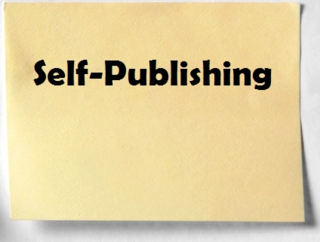 greatest challenges for experts who pen nonfiction books about their profession is to make their writing accessible to the everyday reader. While there is a place for writing aimed at academia and colleagues, generally experts seeking to self-publish do so to increase or to support their business ��� e.g. a psychologist might write about anorexia, a family law attorney about divorce and child custody, a carpenter about home repair.
greatest challenges for experts who pen nonfiction books about their profession is to make their writing accessible to the everyday reader. While there is a place for writing aimed at academia and colleagues, generally experts seeking to self-publish do so to increase or to support their business ��� e.g. a psychologist might write about anorexia, a family law attorney about divorce and child custody, a carpenter about home repair.
Such authors should aim to keep their writing simple. They should begin their outline and every writing session by always assuming that the reader knows virtually nothing about the topic.
To keep nonfiction simple, follow four basic guidelines:
��� Avoid jargon and technical language ��� Such wording generally is confusing to anyone who hasn���t studied or worked in the profession. The author may use terminology from his profession, but he always must first define it in layman���s terms.
��� Explain everything ��� Never presume that some topic is obvious. For example, if writing about child custody issues, readers probably has only a limited idea of how court proceedings are conducted, and what little they know probably is for criminal cases (The process differs in family court.) and greatly influenced by what was seen on television or in movies. If a reader does know what the was explained, he easily can skim through that sentence or paragraph.
��� Give concrete examples rather than be abstract ��� Readers can better understand concepts when the author gives specific examples. Imagine if the previous point were simply written as ���Never presume that some topic is obvious. If a reader does know what you���ve explained, he easily can skim through that sentence or paragraph.��� A specific example helps the reader better understand what the author means.
��� Go step by step and maintain the chronology ��� If explaining a process or how something has evolved, never skip around time-wise. Explain step 1 just as if you were doing it, then go on to step 2 and so on. For a reader unfamiliar with the process, shifting around in the timeline unnecessarily complicates the steps.
Professional Book Editor: Having your novel, short story or nonfiction manuscript proofread or edited before submitting it can prove invaluable. In an economic climate where you face heavy competition, your writing needs a second eye to give you the edge. I can provide that second eye.
&amp;amp;amp;amp;amp;amp;amp;lt;A HREF="http://ws-na.amazon-adsystem.com/widg... Widgets&amp;amp;amp;amp;amp;amp;amp;lt;/A&amp;amp;amp;amp;amp;amp;amp;gt;
Related articles
 Writing inspiration: Read your favorite author
Writing inspiration: Read your favorite author Writing inspiration: Model a story
Writing inspiration: Model a story Sales advantages of writing nonfiction books
Sales advantages of writing nonfiction books Co-authors can form 'general partnership'
Co-authors can form 'general partnership' Does a self-published author need to incorporate?
Does a self-published author need to incorporate?
April 6, 2016
Your best bet: Could���ve vs. could of
Here���s a  writing tip you can take to the races.
writing tip you can take to the races.
Sometimes we���ve misheard an expression all through our lives and then repeat that error in our writing. Could of, should of and would of are fine examples of this.
The correct spelling actually is could���ve, should���ve and would���ve. That���s because the words actually are contractions for could have, should have and would have.
When spoken, the ���ve often sounds like of. If you think about it, though, of doesn���t makes sense. Of indicates a relationship between a part and a whole, as in the sleeve of a shirt. In the sentence Uncle Jim should���ve bet on a different horse, there���s nothing to show a relationship between.
Professional Book Editor: Having your novel, short story or nonfiction manuscript proofread or edited before submitting it can prove invaluable. In an economic climate where you face heavy competition, your writing needs a second eye to give you the edge. I can provide that second eye.
&lt;A HREF="http://ws-na.amazon-adsystem.com/widg... Widgets&lt;/A&gt;
Related articles
 Writing Prompt: Change the world
Writing Prompt: Change the world Common questions about publishing ebooks
Common questions about publishing ebooks Promote your book by hosting guest bloggers
Promote your book by hosting guest bloggers
April 5, 2016
Writing prompts ��� How to build a story from them
During the 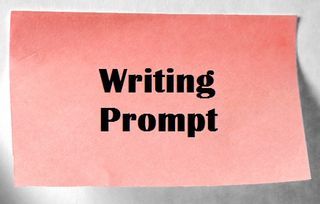 past several Tuesdays, followers of this blog probably have noticed the posting of conflict-oriented writing prompts. That is, the prompt focuses a conflict from which a story can be built, such as:
past several Tuesdays, followers of this blog probably have noticed the posting of conflict-oriented writing prompts. That is, the prompt focuses a conflict from which a story can be built, such as:
The main character dealing with personal guilt for a bad, injurious choice he once made, finds a victim of a crime that parallels his. The discovery of this victim makes his guilt so unbearable that he must atone for it to set his world right. How does he go about coping with his guilt and making it right so he can live with himself?
or
Our main character doesn���t want to help someone he has responsibility for but at the same time feels guilt over these feelings. How does he cope with the person who needs help, and how does he resolve his issues of guilt?
The first step to building a story from these writing prompts is to select one from the list. Pick the prompt that inspires your creativity, that starts your imagination running in all kinds of directions about how such a story might be written. Let���s suppose, for the sake of example, that the first of the two prompts above is the one that works best for you.
The next step is to give your a prompt a setting, that is a place and time for the conflict to unfold. After all, the ways our main character attempts to solve his problem always occur within the context of the setting. Perhaps the setting for our conflict is the 2010s in a city that is at least mid-sized, specifically the United States. The opening of the story might be the finding of a dead child, left in a garbage bag in his run-down apartment complex���s trash container, when he takes out his garbage one morning.
After establishing the setting, devise ways the main character might solve the prompt���s central problem, in this case coping with his guilt and making it right so he can live with himself.
To do that, you might spend some time determining what the main character feels guilty about. Perhaps a decade before he was a sergeant in the Army, serving in Afghanistan, and one of the village���s mothers came to him for help because the local chieftain was physically and sexually abusing her son. He is ordered not to get involved in local affairs, however, and a few days later fellow soldiers find the boy���s dead, broken body left in the village refuse dump. Our main character feels that his inaction led to the boy���s death.
So how does he atone for his guilt? Perhaps, after seeing the current murdered child���s mother on the news and after an interviewing police detective tells him not to get involved any further, he decides to solve the crime. Along the way, he realizes he���s out of his realm and that perhaps, if he cannot solve the crime, he must bury his guilt again. Maybe he seeks solace in someone ��� say a family member or a priest. There are thousands of ways to take the story, and you���ll need to go the direction that best fits what you���re familiar with and the message you want to convey (For example, solving the crime means you have a mystery or an action-adventure tale; confessing to a priest might carry a spiritual theme). Regardless of which path is taken, you now have a loose outline of the story.
From there, fill in the details of the outline, start writing, or create dossier of your characters. No matter your preferred method, you���re on your way to writing a story rather than an unusable (albeit delightful to pen) passage that results from your standard fare writing prompt, such as What is the weather like at someplace you wish you could be or write about a ship that can take you place you���ve never been before.
Professional Book Editor: Having your novel, short story or nonfiction manuscript proofread or edited before submitting it can prove invaluable. In an economic climate where you face heavy competition, your writing needs a second eye to give you the edge. I can provide that second eye.
&amp;lt;A HREF="http://ws-na.amazon-adsystem.com/widg... Widgets&amp;lt;/A&amp;gt;
Related articles
 How many words is a novella?
How many words is a novella? Writing inspiration: Model a story
Writing inspiration: Model a story When to promote your book using Twitter
When to promote your book using Twitter Think about concerns over marketing book
Think about concerns over marketing book Client publishes her first novel, set in Africa
Client publishes her first novel, set in Africa



